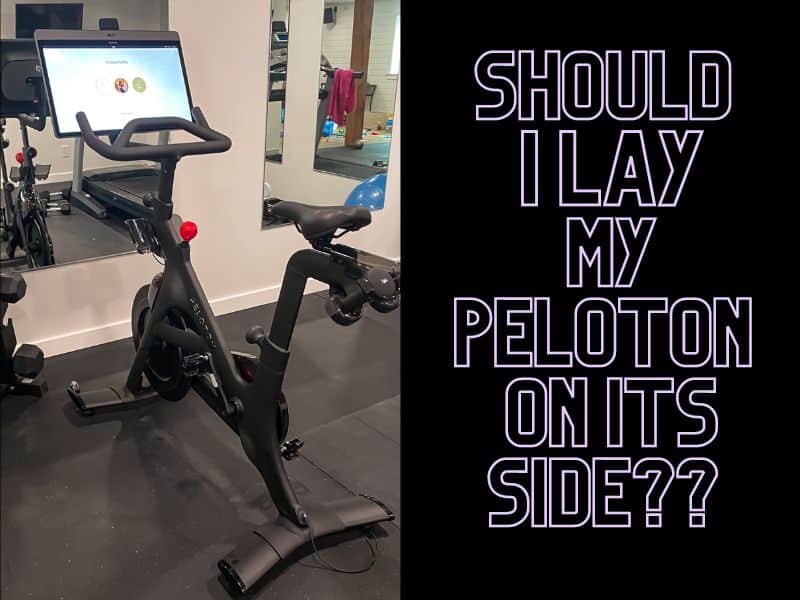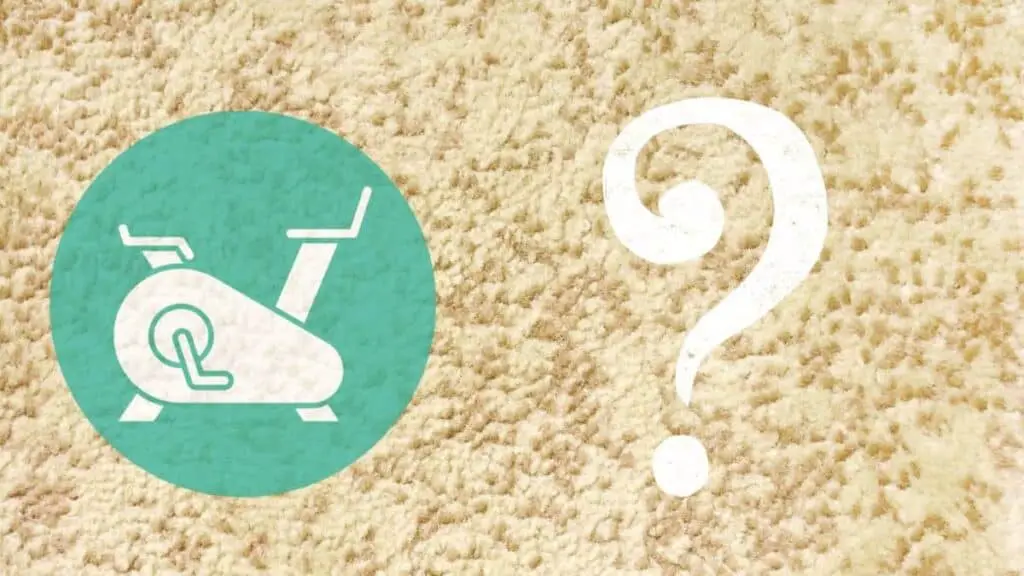Peloton bikes can be tricky to move. You are constantly faffing about not scratching them, and at the same time, they are heavy and awkward. Looking at the size of the bike and the size of your hatchback’s trunk, you are sure you can make it fit if you can lay it on its side, but you’re not sure if it’s okay to do.
Peloton bikes have various attachments that can be damaged if they are laid on their side incorrectly. Most notably are the screen, bottle cage, weight holder, and pedals. However, after removing the screen and attachments, it’s safe to lay the frame on its side and even transport it.
If you’re worried about damaging your bike during a move and have to move it on its side, we are here to help. With a couple of steps, you will be ready to safely put your Peloton baby on its side.
How To Put A Peloton Bike On Its Side
The actual job of setting your bike on its side is obviously relatively straightforward. Still, you risk doing some real damage if you do not prepare the bike first.
Step 1 – Unplug The Power Lead
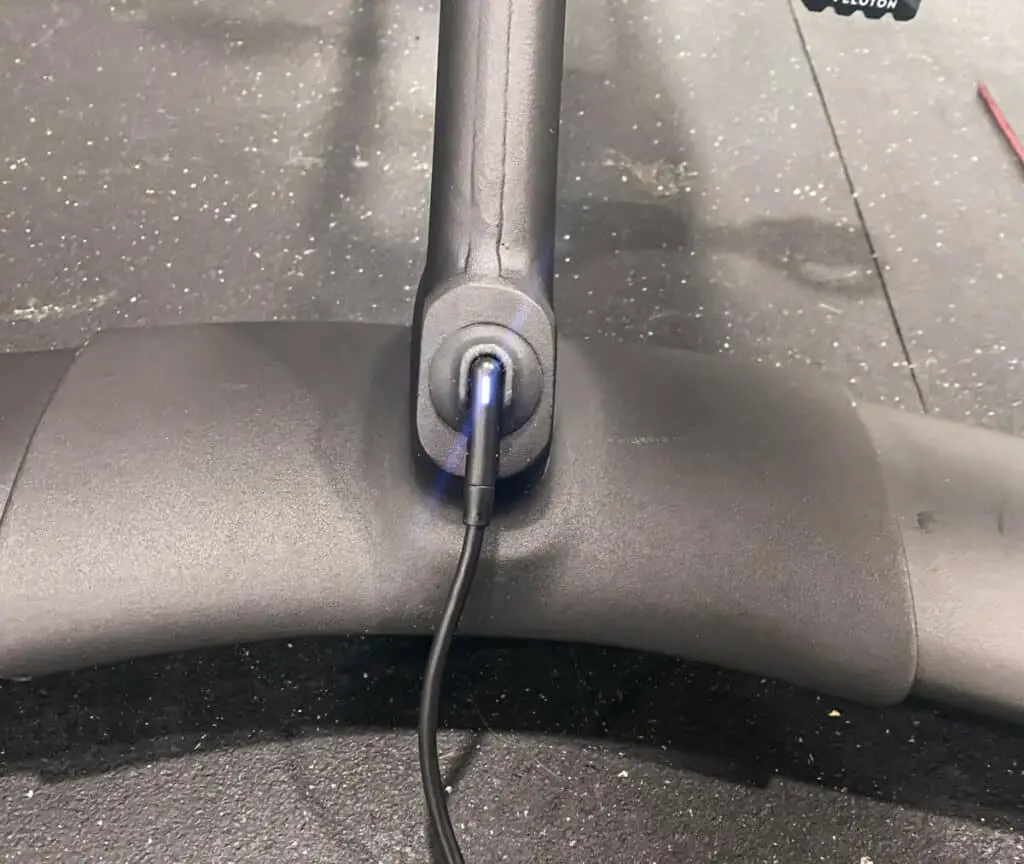
Whenever planning to move a Peloton in any way, I always advise people to plug out the power lead first. This way, you don’t forget to do it later and accidentally strain or damage the cable or socket.
Step 2 – Remove The Screen

The screen is obviously the most sensitive and fragile bit of the bike. Unfortunately, it is also placed so that if you lay the bike on its side, some of the weight may rest on the screen. And after a small bump in the road, you could be in the market for a new Peloton screen.
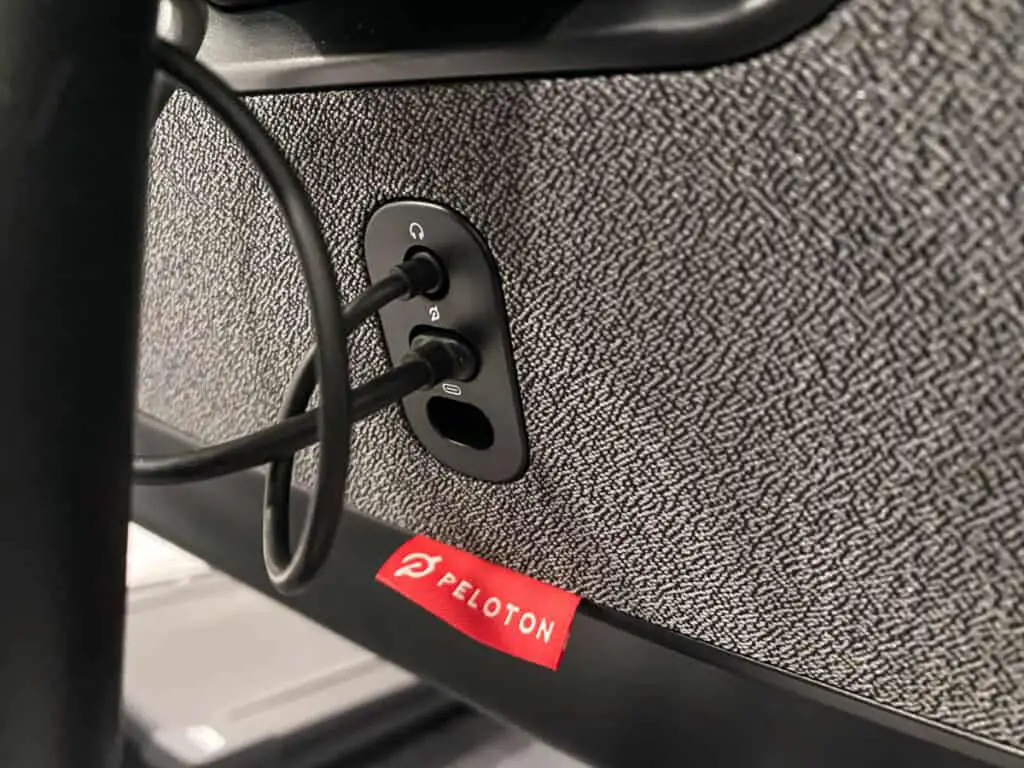
Fortunately, it’s always relatively simple to remove. Start by unplugging the two cables that run into the screen, namely the data and power cables.
Next, undo the Phillips screws (for a standard Peloton) or Allen screws (for a Peloton plus) while asking a friend to hold the screen in place. With the screws removed, you can detach the screen.
Make sure to lay it down safely on a blanket or towel. A pro tip is to put the screws back into the Peloton frame to find them easily when you need to put everything back together.
Step 3 – Remove All Cages And Attachments
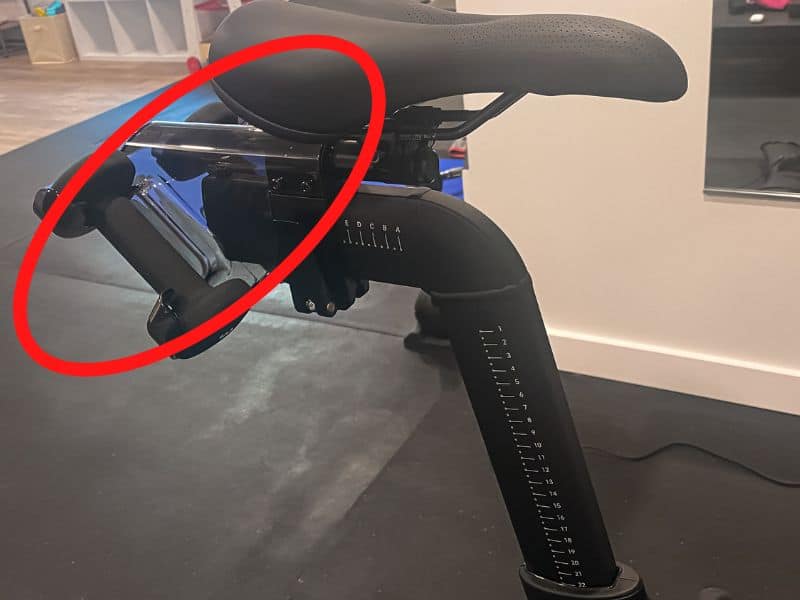
You can start removing all the attachments like the weight holder and bottle cages. These parts aren’t made to take the bike’s weight and probably will bend or break if you lay the bike onto them.
Step 4 – Remove Seat And Handlebars

It’s a good idea to remove the seat post and handlebars altogether. Firstly, it makes the bike a little less awkward because fewer things can get caught.
Secondly, it also protects the cushioning and lining of the seat and handlebars from getting dented, scratched, or torn from the bike’s weight. You could accidentally lay down your bike so that there is a pressure point on either the bars or seat, which could result in a puncture.
Step 5 – Remove The Pedals

The last piece of gear that needs to be removed is the pedals. They can be challenging to undo if they weren’t installed with a dab of grease on the threads. You will need a 15mm box-head wrench or the tool that came with the bike.
Here is a video that shows you how easy it is to remove Peloton’s pedals: https://www.youtube.com/watch?v=NaBrJU1EiRY
There are two important reasons for removing the pedals. The first is to avoid damage to the pedals. Because they protrude from the frame, the bike’s weight will be on them, and that weight can strain not only the pedal bolts but also the crank arms.
The second reason you want to remove the pedals is that the pedals form a pressure point on the surface you are setting the bike down on. So, if you are loading it in the back of your car, you could damage the carpet in the trunk.
Final Step – Set The Bike Down
With all that out the way, you can put the bike on its side. While it should be okay to simply tilt down gently, I suggest getting a friend to help you. The frame can be pretty heavy, and you absolutely want to avoid dropping it.
Conclusion
It is entirely possible and safe to lay a Peloton on its side, as long as you first remove the screen, cages, seat, handlebars, and pedals. If you do not remove these attachments, you risk damaging them because of the weight of the bike resting on them.
When tilting your bike down, it’s best to get a friend to help you, just to avoid the risk of dropping the frame on the ground.

